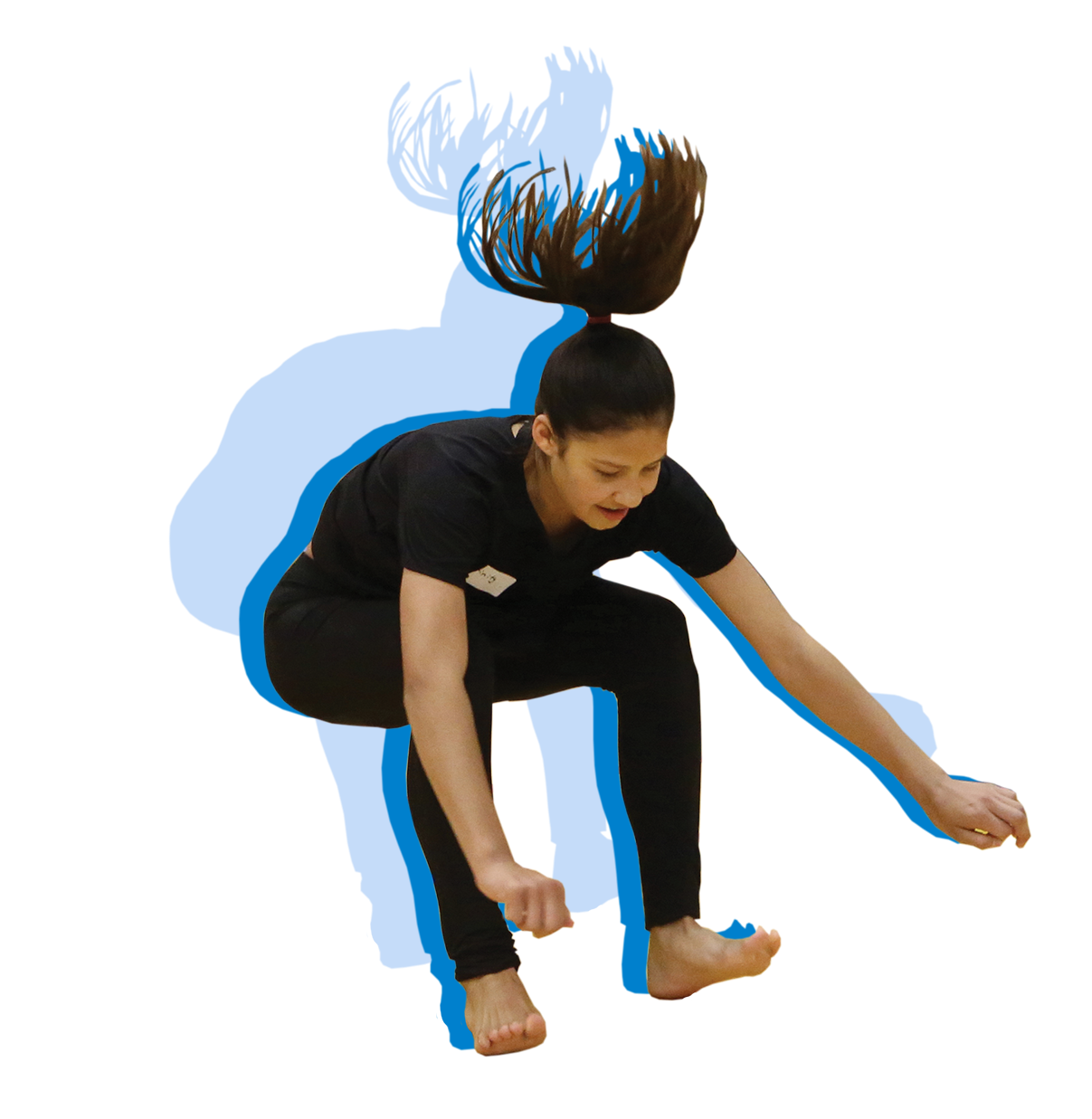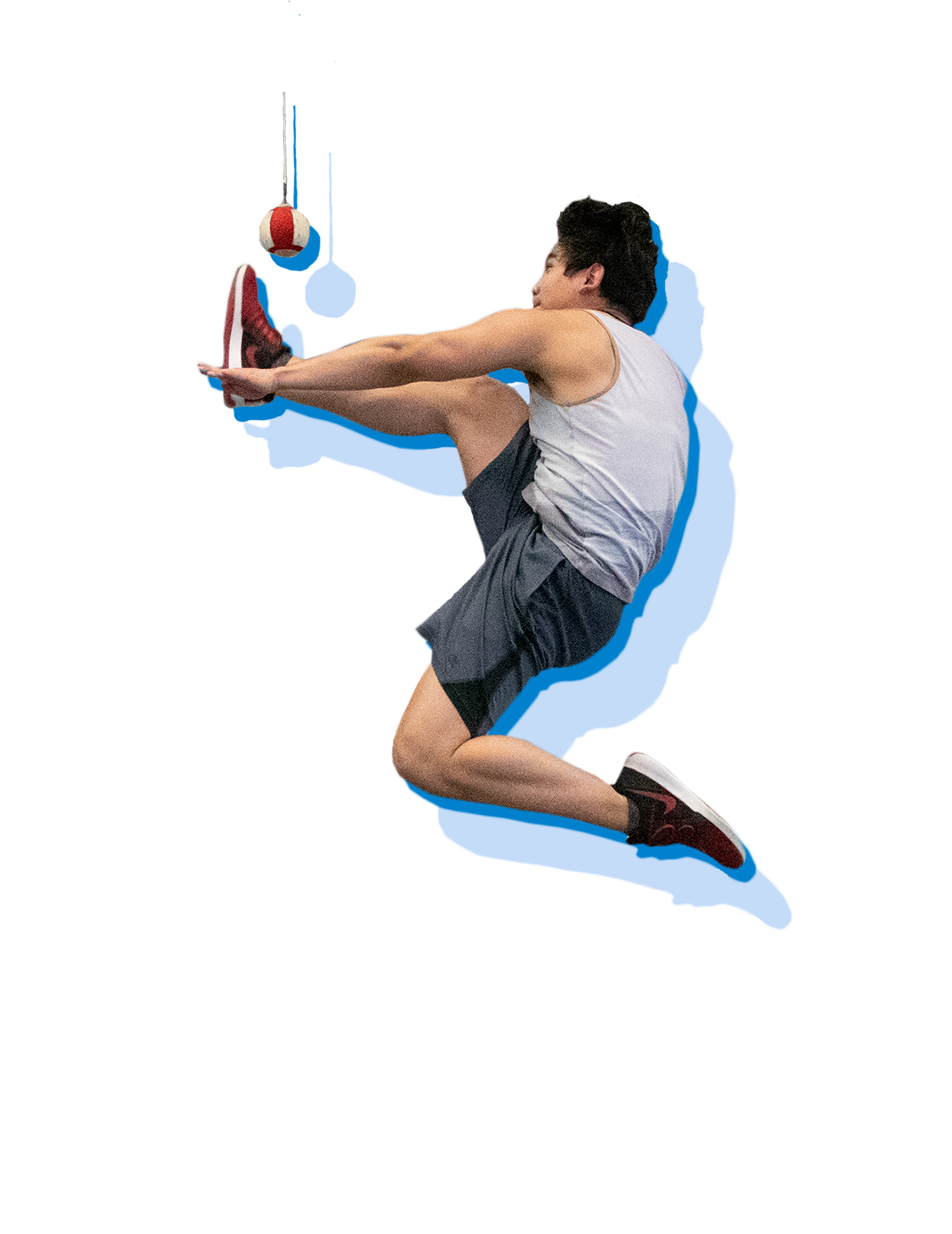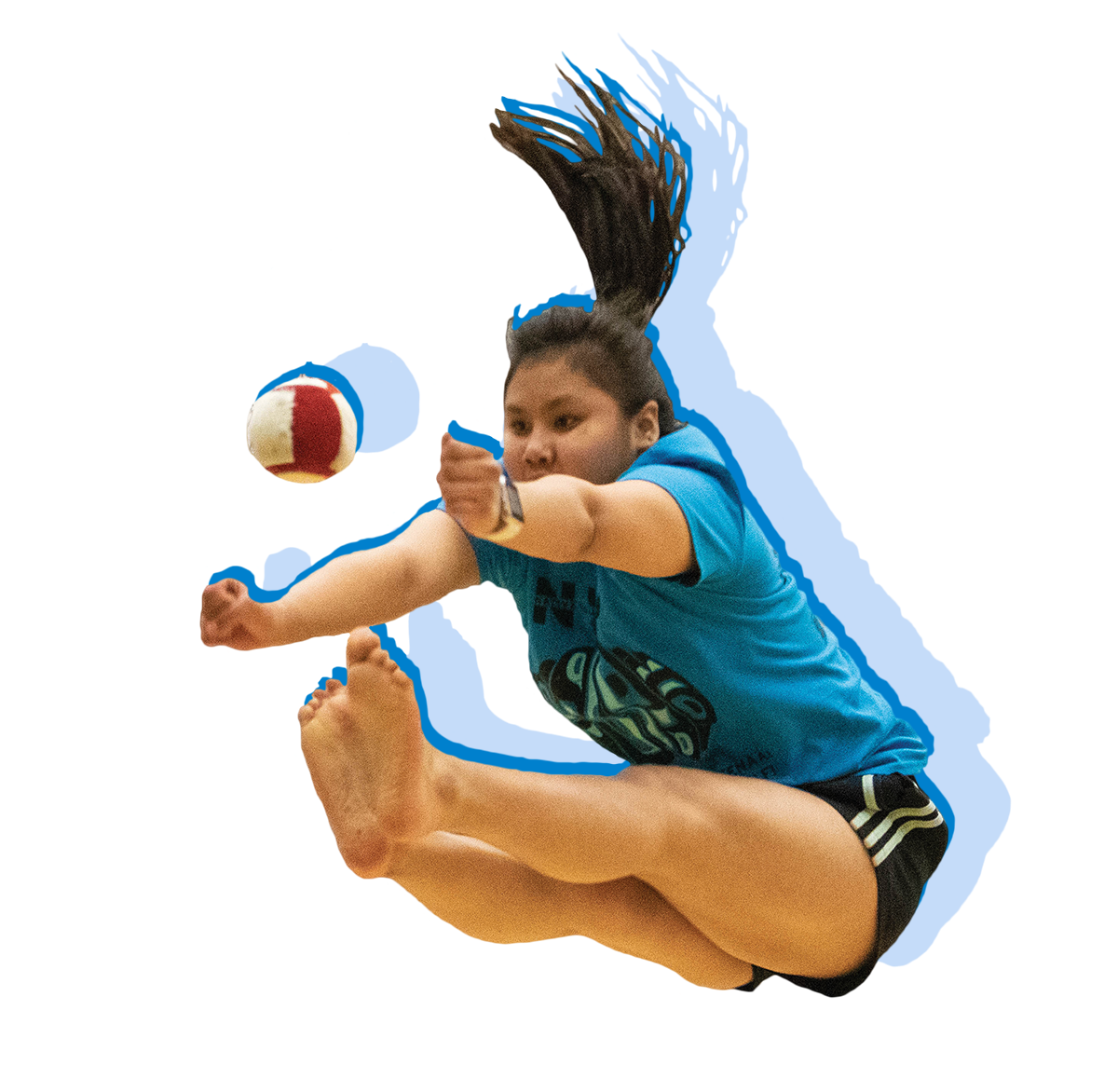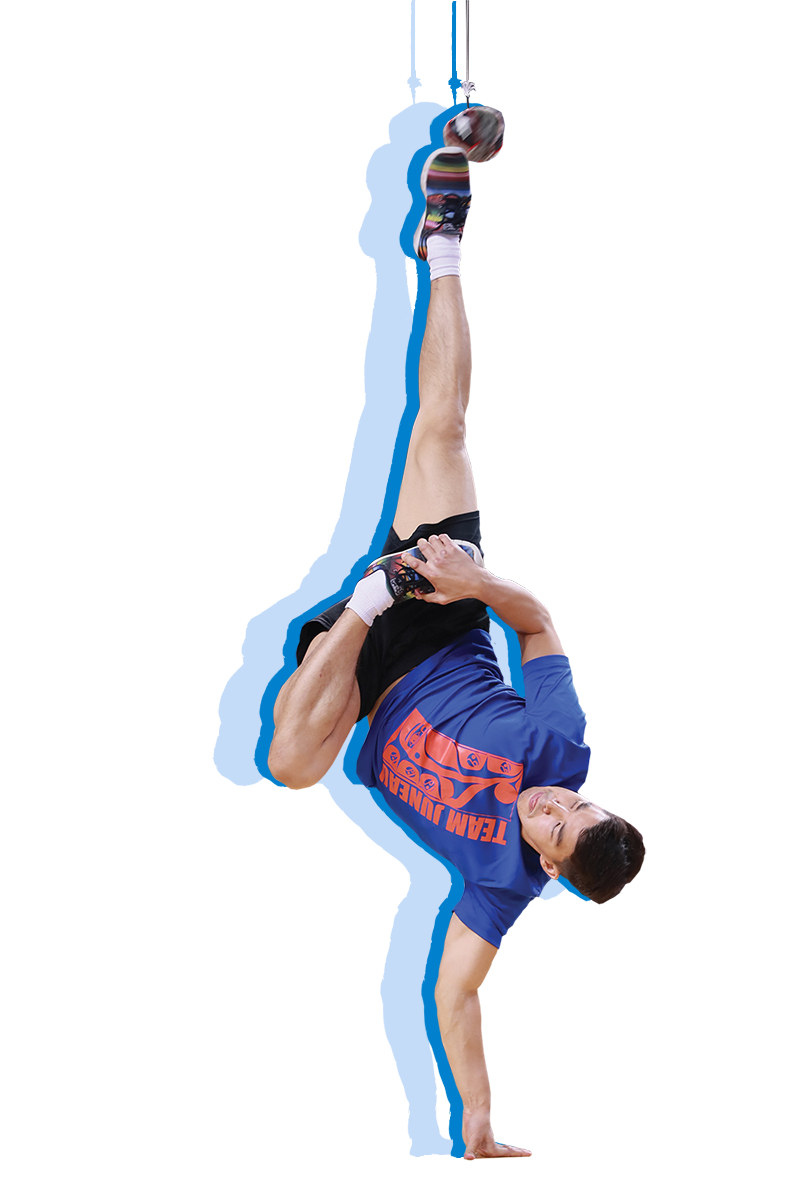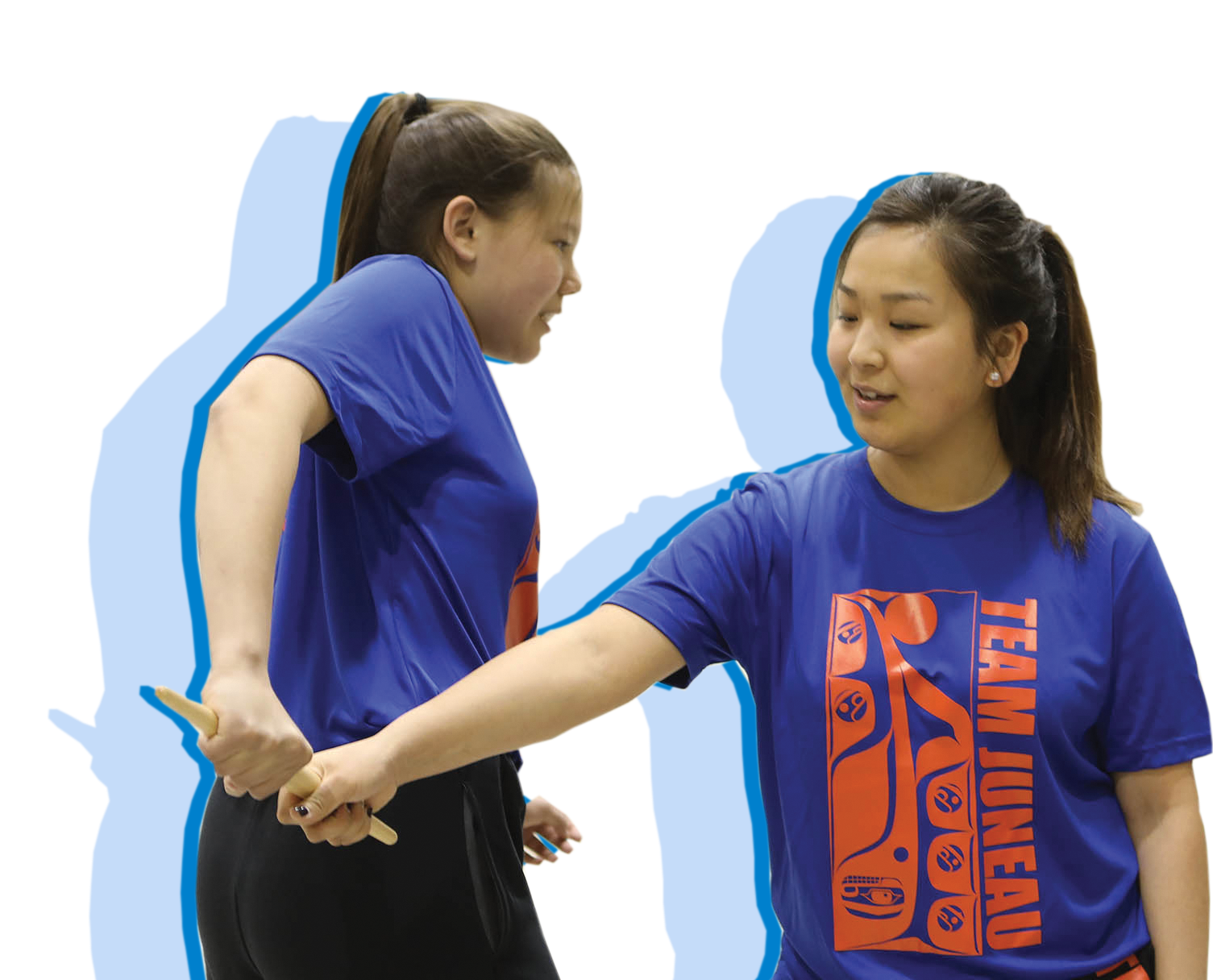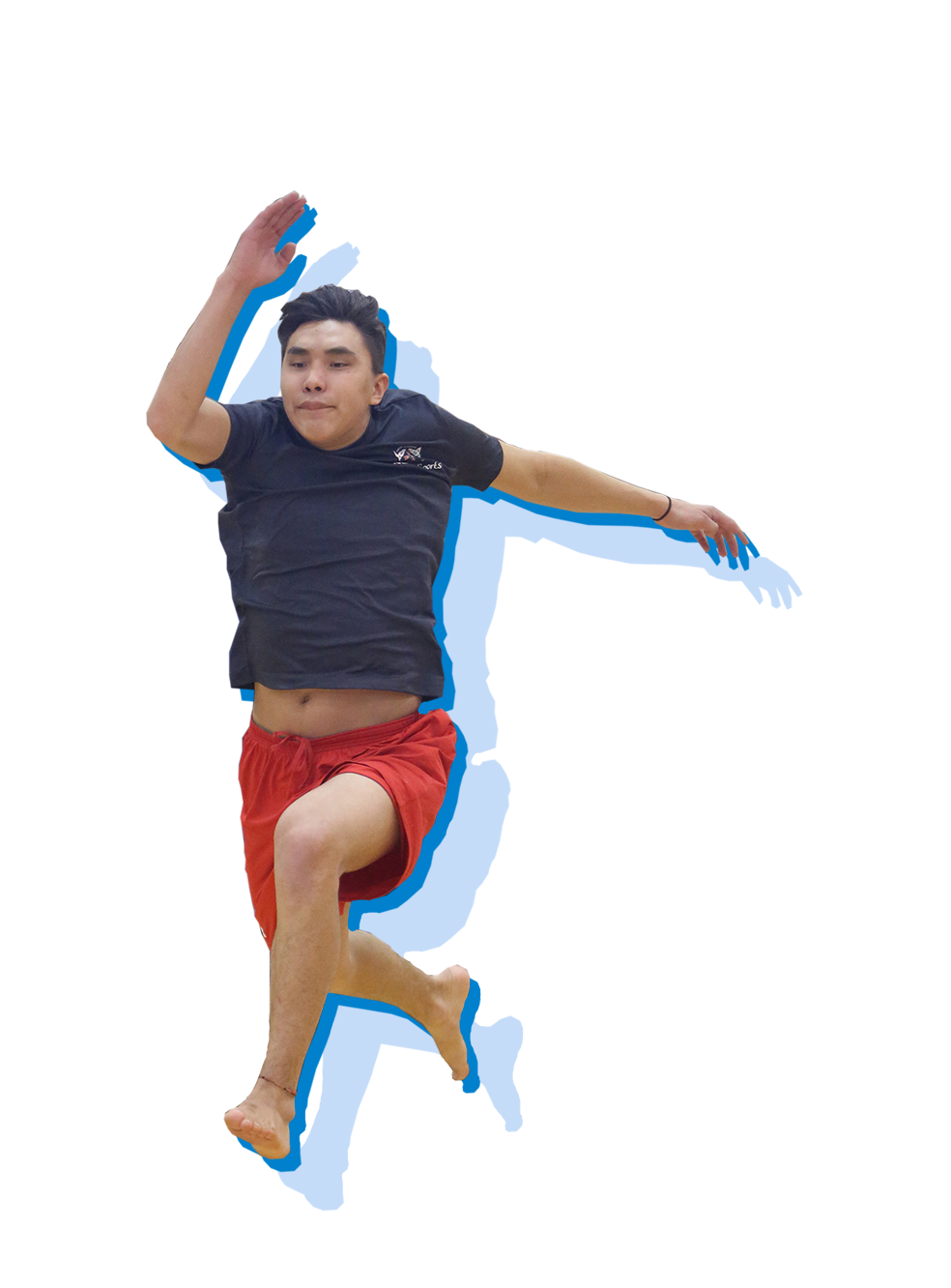
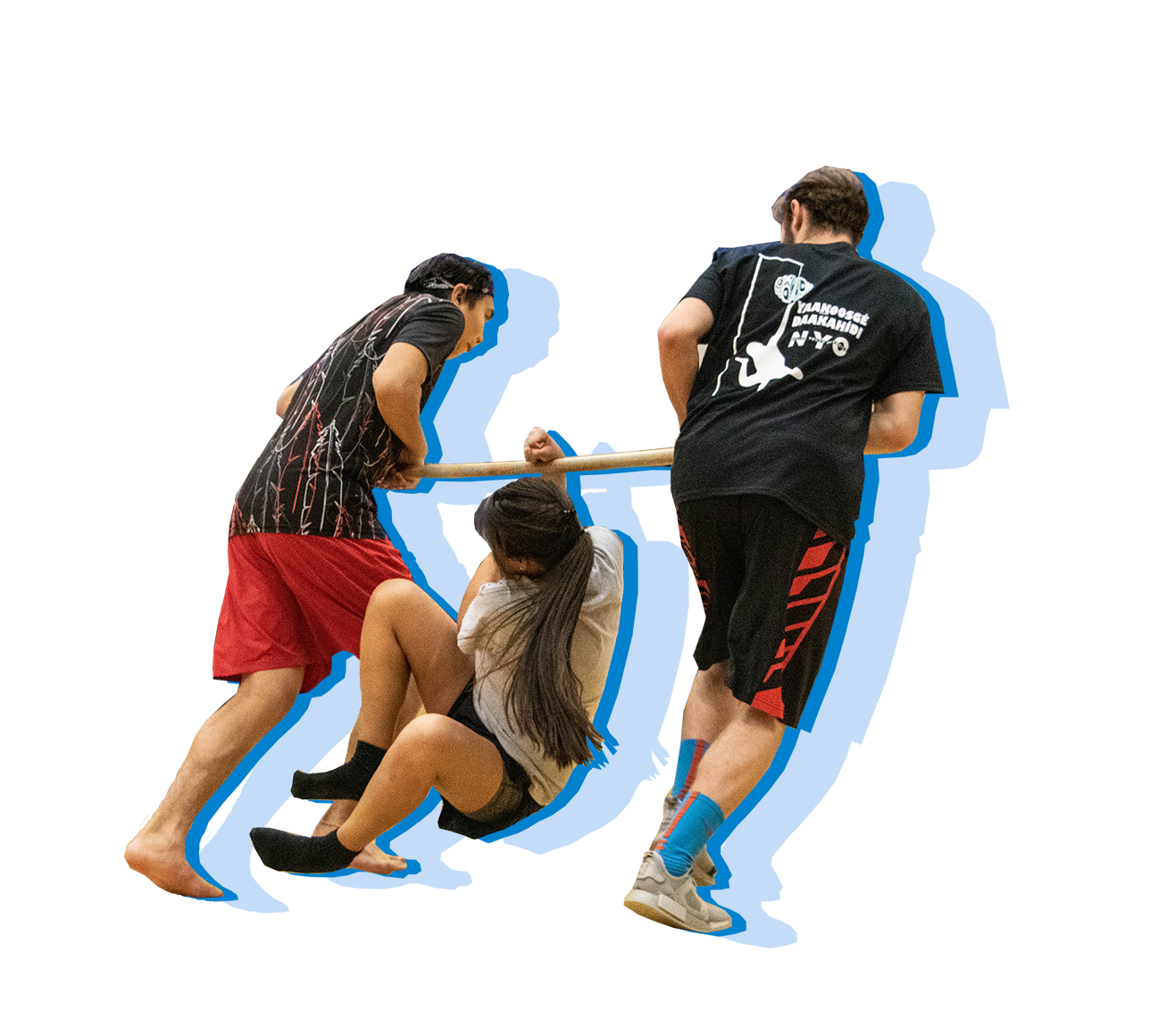
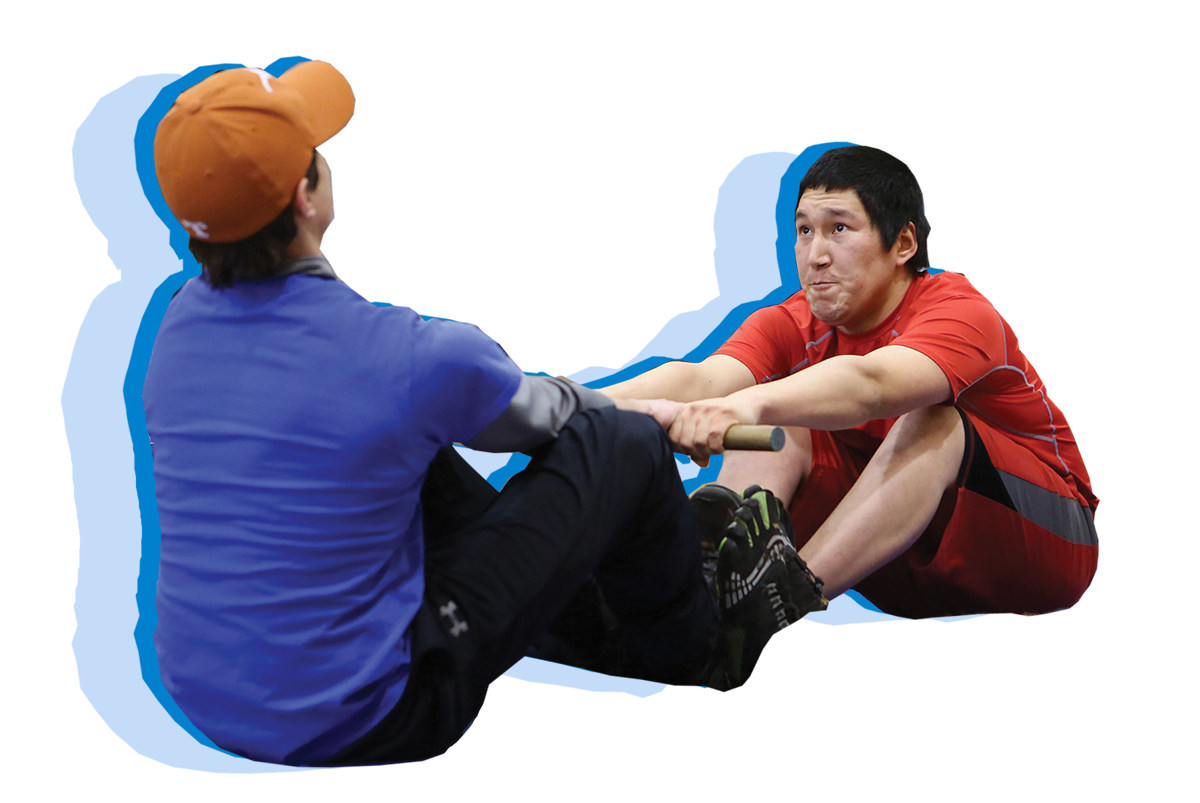
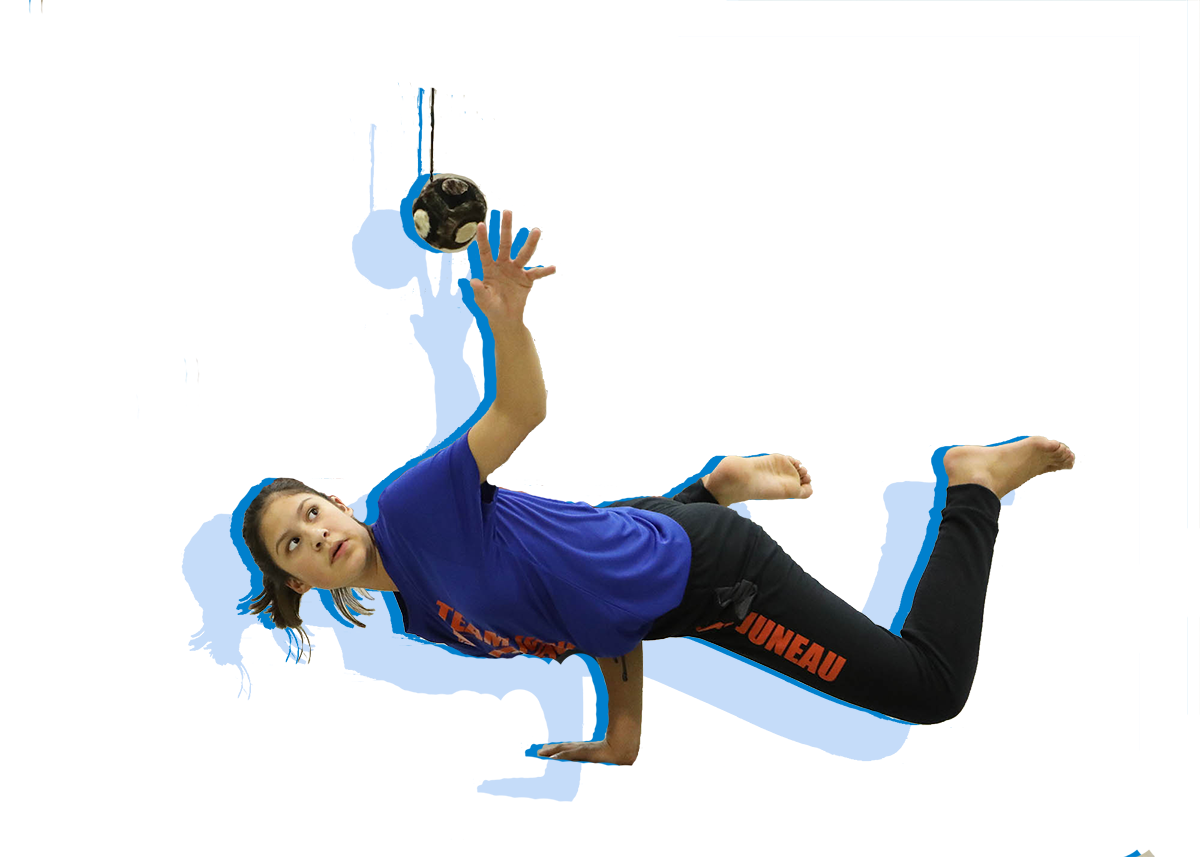
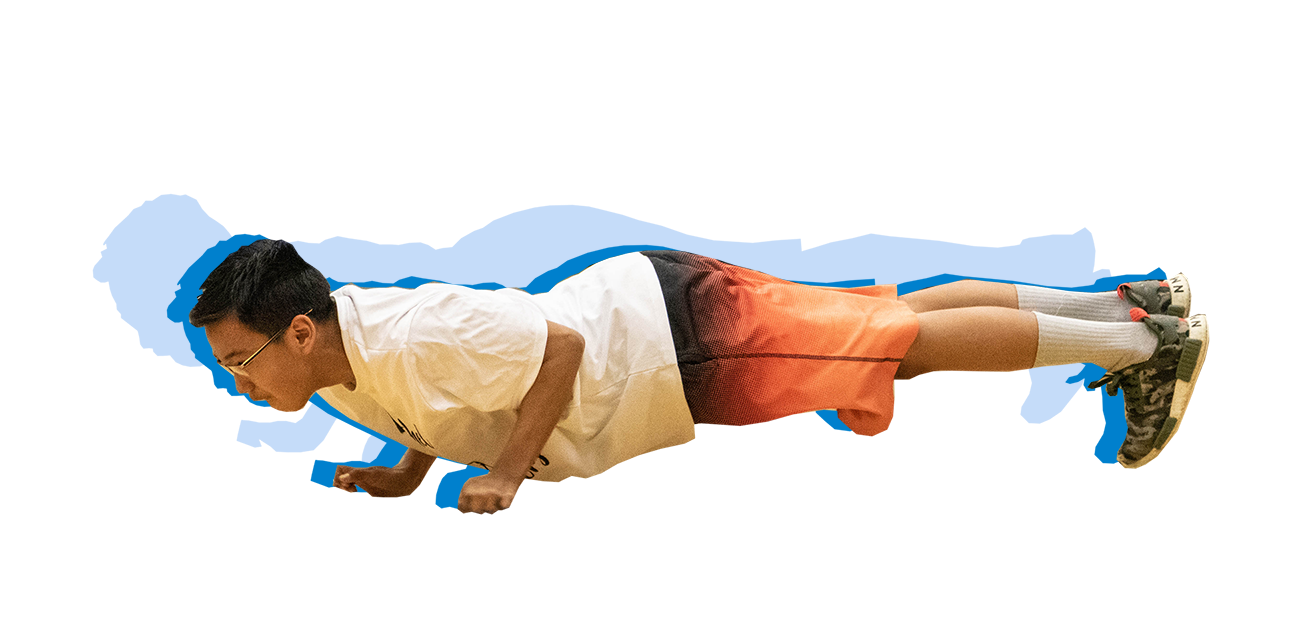
Scissor Broad Jump
The Scissor Broad Jump requires athletes to make four continuous hops/ steps without losing balance. The athlete who jumps the farthest distance wins. Traditionally, the Scissor Broad Jump was used to practice balance needed when jumping on ice floes and to keep warm.
Wrist Carry
Starting from a sitting position, athletes hook one wrist over the middle of a long pole held by two carriers. Without touching the pole or floor with any other part of the body, athletes suspend themselves off the pole and maintain the position while being carried until they can no longer hold their weight. This event represents the significance of a successful hunt and traditionally tests the strength and endurance of hunters, while showing appreciation for the animal giving itself.
Inuit Stick Pull
Two contestants sit on the floor facing each other, the soles of their feet touching, knees bentat a 45-degree angle. Barehanded, contestants firmly grasp a stick placed between them and try to pull the stick away from their opponent without jerking or resetting their grip. To win a round, athletes must pull their opponent from the floor, or cause them to fall over sideways or release their grip. Traditionally, the event was used as practice for pulling seals from the ice.
One-Hand Reach
Balancing their weight on the palm or knuckles of one hand, athletes reach with their free hand to touch a suspended ball, then place their free hand on the floor—without otherwise touching the floor. The ball is raised in increments of four inches after each round.
Seal Hop
Female contestants assume a push-up position with arms straight and palms flat on the floor. Male contestants must maintain a lowered push-up position, supporting their weight on the heels of the hands and the knuckles. At the official’s signal, contestants hop—seal-like—across the floor on their hands and toes while maintaining the push-up position. The Seal Hop was used as a game of endurance, and for sneaking up on a seal, mimicking the mammal’s movement.
Kneel Jump
Athletes start in a kneeling position, with the tops of their feet flat on the floor, and then jump up and forward. Athletes must land on both feet simultaneously and remain in that position without moving and without otherwise touching the floor. The winner is the contestant who jumps the greatest distance. The Kneel Jump was a game used to strengthen the leg muscles for jumping from ice floe to ice floe, and for lifting prey after a successful hunt.
One-Foot High Kick
From a standing or running start, athletes jump with both feet, kick a suspended ball with one foot, then land on the kicking foot—without losing balance. The ball is raised in increments of four inches after each round. In many cultures, the One-Foot High Kick was used for signaling a successful hunt.
Two-Foot High Kick
Jumping with both feet simultaneously, athletes kick a suspended ball, then land on both feet without falling backwards. The ball is raised in increments of four inches after each round. The Two-Foot High Kick was historically used to communicate the success of a spring hunt.
Alaskan High Kick
To prepare for the kick, athletes sit on the floor and balance on one foot while reaching across the torso to hold the other foot. Leaning back on the opposite hand, athletes thrust the balancing foot straight up to kick a suspended ball, then land on the kicking foot—without losing balance. The ball is raised in increments of four inches after each round.
Dené Stick Pull
Contestants stand next to each other facing in opposite directions, and each place their near foot forward and alongside the outside of their opponent’s. With their near arms held down, contestants grab the opposite end of a tapered and greased wooden dowel and attempt to pull the stick from their opponent’s hand. The Dené Stick Pull represents grabbing a slippery salmon and was used traditionally to develop hand and arm strength.
